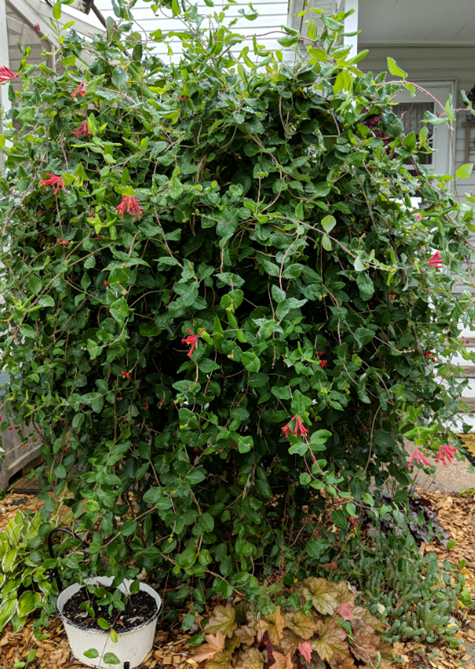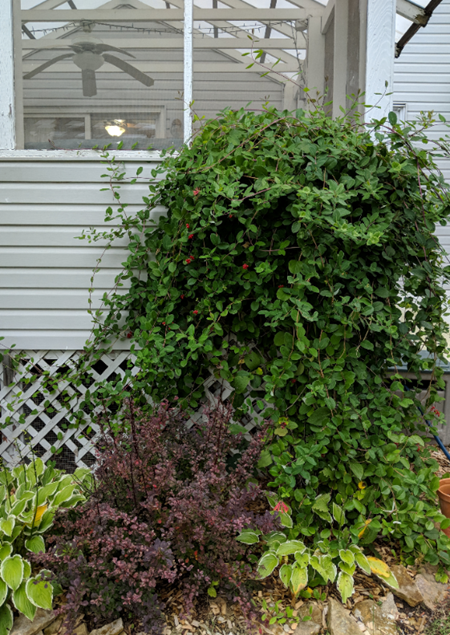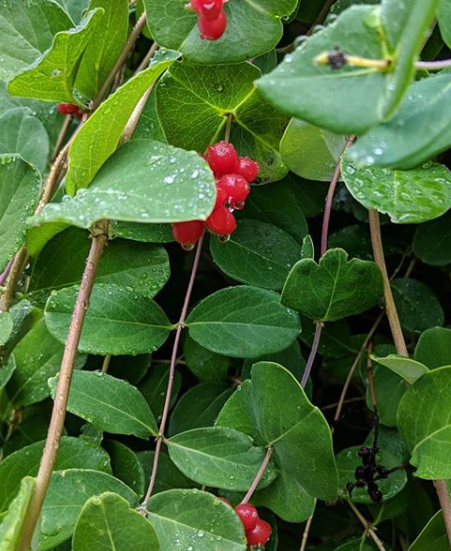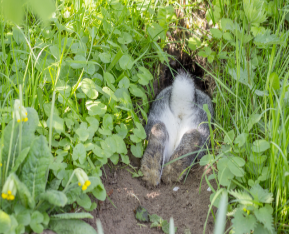Click below to listen to my 2 min. Garden Bite radio show: Honeysuckle vines – the beautiful and the bad
I have two outstanding honeysuckle vines.

The one below is covering an iron sculpture…

They grow like crazy and offer beautiful trumpet like flowers that attract hummingbirds late into the season.

Then come these lovely berries…

…but as I was looking up information about those berries, I was stunned to find so much differing and confusing information on whether the berries are toxic. They most definitely are for CERTAIN kinds.
The problem is, when I went looking to see which ones were toxic and which ones weren’t I started down a rabbit hole and I’m about to drag you right down there with me! Sorry! Not sorry.
The honeysuckle family is iffy for foragers. It has edible members and toxic members, edible parts, toxic parts, and they mix and match. Some are tasty, some can stop your heart! So you really have to make sure of which one you have and which part is usable and how. Eattheweeds.com makes it clear as mud.
My vines are Lonicera brownii ‘Dropmore Scarlet’. It’s a hybrid. The Japanese honeysuckle, Lonicera japonica IS toxic to humans and birds.
The nectar of honeysuckle vines is sweet, tasty and safe for hummingbirds. The berries are just a bit too iffy to bother trying. You (and any birds) could be mildly annoyed to dead. It’s pretty ridiculous. And there’s your rabbit hole!

Honestly when I started this Garden Bite, I had no idea how much I’d learn! Which is one of the best reasons I LOVE creating this show! Get more details on gardenbite dot com about the various honeysuckle and see the vines that are taking over. I really do need to prune them back. That’s another thing, some of them are invasive!
More information:
- Friends of the Mississippi River “Ecological Traps”
- Native plants PNW “Trumpet Honeysuckle”
- Cooperative Extension Ask An Expert “Honeysuckle”
- homeguides.sfgate “What are the dangers of Honeysuckle”
